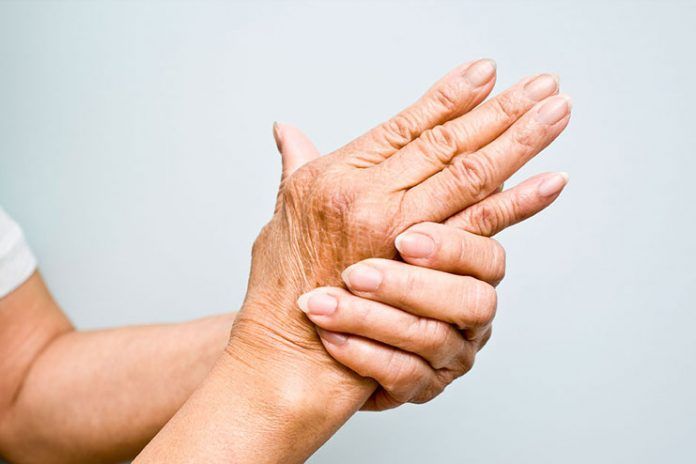Affiliate Disclaimer
Some links in this article are affiliate links. We may earn a small commission if you make a purchase through these links, at no extra cost to you. We only recommend products we find useful to our readersIt is not an easy job to lead life with a chronic disease. Especially, if it is interfering with your day-to-day activities, your self-esteem lowers and lifestyle worsens. One such medical condition with not effective cure is Rheumatoid Arthritis (RA).
To deal with such a life-long chronic disease, one has to be well-informed and mentally strong. Read through or HealthSpectra post to learn everything about Rheumatoid arthritis and ways to effectively deal with this medical condition.
- What Is Rheumatoid Arthritis
- Stages Of Rheumatoid Arthritis
- What Causes Rheumatoid Arthritis
- What Are The Symptoms Of Rheumatoid Arthritis?
- Diagnosis For Rheumatoid Arthritis
- Treatment For Rheumatoid Arthritis
- Exercises For Rheumatoid Arthritis
- Home Remedies For Rheumatoid Arthritis
- Prevention Of Rheumatoid Arthritis
- FAQs
What Is Rheumatoid Arthritis?
As per the medical definition, Rheumatoid Arthritis is a chronic progressive disease causing inflammation in the joints and resulting in painful deformity and immobility, especially in the fingers, wrists, feet, and ankles. It is the resulting condition where the immune system of the body attacks its own tissue, including joints and the internal organs in severe cases.
It is a lifelong condition with no cure. However, medication and physiotherapy is required to slow down the progression of the disease.
In some people, rheumatoid arthritis affects more than just joints. This chronic inflammatory disorder can damage other body parts like lungs, eyes, heart, skin and blood vessels.
Stages Of Rheumatoid Arthritis:
The rheumatoid arthritis condition can be classified into 4 different stages.
Stage I: No visible damage on X-rays. Bone thinning signs may be observed
Stage II: Chances of visible slight bone damage on X-ray. Bone thinning is observed around a joint. Possible cartilage damage can be expected with the limited joint mobility and no joint deformities. Abnormalities of soft tissue around joints.
Stage III: Clear cartilage, bone damage and bone thinning around the joint is seen in the X-rays. Permanent stiffening or fixation of the joint with extensive muscle atrophy.
Stage IV: Evidence of cartilage as well as bone damage, besides osteoporosis around the joint. Joint deformity, extensive muscle atrophy, and abnormalities of soft tissue are possible.
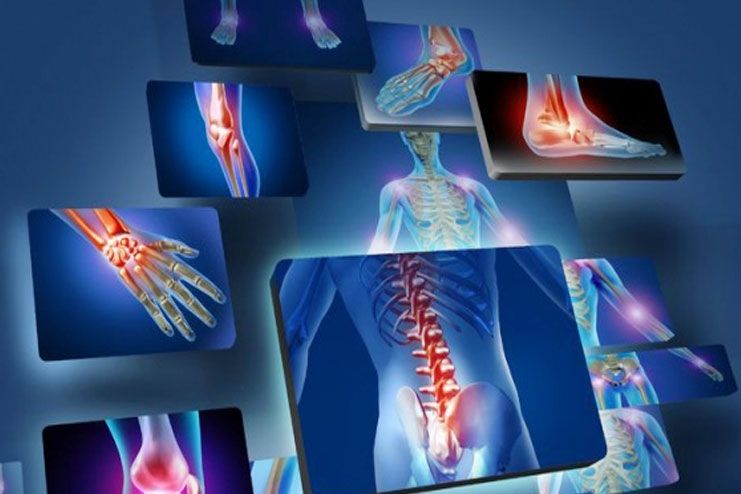
What Causes Rheumatoid Arthritis?
The prime culprit to develop rheumatoid arthritis is the body’s own immune system that mistakenly attacks self-body tissues. As a result, the inflammation in the joints linings, bone erosion and joint deformity occurs.
A genetic component is likely to cause this medical condition. Environmental factors like viral and bacterial attack may trigger rheumatoid arthritis.
Other factors that may increase the rheumatoid arthritis risk are age, sex, habits, family history, obesity, etc.
- Women are at high risk of developing rheumatoid arthritis.
- This medical condition is most common in people between 40 and 60 years.
- Family history of rheumatoid arthritis increases the risk and smoking is the risk factor too. It enhances the severity of the disease.
- Some studies also suggest that the exposures to certain chemicals like silica or asbestos may increase the rheumatoid arthritis risk. For example, emergency workers exposed to dust are at higher risk of rheumatoid arthritis.
- Overweight or obese people are with greater risk.
What Are The Symptoms Of Rheumatoid Arthritis?
Painful swelling in the joints is the major symptom of rheumatoid arthritis. Other associated signs of rheumatoid arthritis include tender, warm, swollen joints, joint stiffness, fatigue, fever and weight loss. Severe rheumatoid arthritis can cause physical disabilities, even though many medications have been developed.
Early signs of rheumatoid arthritis are swelling and pain in the smaller joints i.e. the joints between the fingers and hands; joints between the toes and feet. Gradually, the symptoms spread to the wrists, ankles, knees, hips, elbows, and shoulders. Mostly, the symptoms occur in the same joints on both sides of the body.
The non-joint body parts that the rheumatoid arthritis affect includes eyes, skin, heart, lungs, salivary glands, kidneys, bone marrow, nerve tissue, and blood vessels. If the condition is left without medical attention, rheumatoid arthritis can lead to joint displacement or deformation.
Hence, it is quite important to seek immediate medical in case of persistent swelling and discomfort in the joints. Else, the inflammation resulting from the rheumatoid arthritis destroys the joint bones and cartilage. Moreover, the ligaments, as well as the tendons, get weakened and stretched.
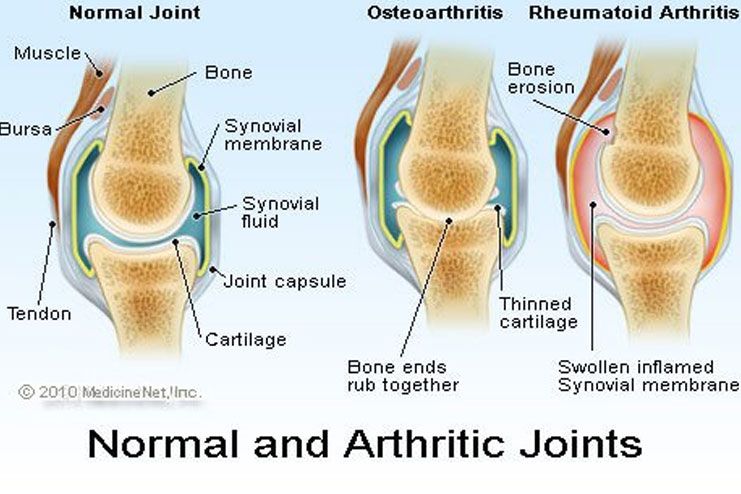
Diagnosis For Rheumatoid Arthritis:
Rheumatoid arthritis can neither be diagnosed with physical tests or blood tests, nor be identified with the early symptoms as they resemble other diseases too. However, redness, pain, and swelling in the joints may be the first clue. Further blood tests and imaging tests help diagnose Rheumatoid Arthritis.
Increased erythrocyte sedimentation rate (ESR, or sed rate) or C-reactive protein (CRP) may indicate body inflammation. A few other blood tests may indicate anti-cyclic citrullinated peptide (anti-CCP) antibodies and the rheumatoid factor. Also, X-rays, ultrasound tests and MRI can help track the disease progression.
Treatment For Rheumatoid Arthritis:
Class of medications called anti-rheumatic drugs (DMARDs) would be prescribed in the most rheumatoid arthritis cases. Medications are prescribed based on the extent of the disease.
-
- Nonsteroidal anti-inflammatory drugs (NSAIDs) help reduce inflammation and pain.
-
- Corticosteroid medications (prednisone), slows down joint damage and reduce inflammation.
-
- DMARDs also help slow down the progression of the disease and avoid permanent damage of the affected tissues and the joints. Some of them are hydroxychloroquine (Plaquenil), leflunomide (Arava), and sulfasalazine (Azulfidine).Biological modifiers target the immune system parts that trigger inflammation. Some of them include etanercept (Enbrel), abatacept (Orencia), adalimumab (Humira), tocilizumab (Actemra), anakinra (Kineret), certolizumab (Cimzia), golimumab (Simponi), infliximab (Remicade), rituximab (Rituxan), and tofacitinib (Xeljanz).
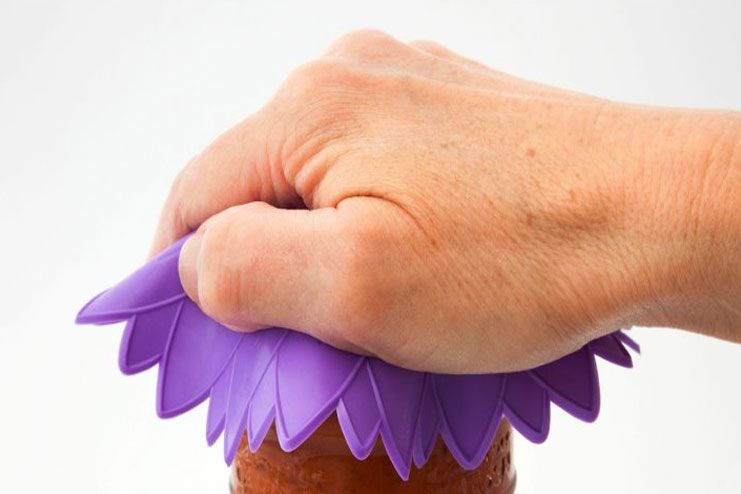
Exercises For Rheumatoid Arthritis:
Occupational or a physical therapist help with exercises to for flexible joints. Assistive devices can help avoid stressing your painful joints.
-
- Hydrotherapy drastically helps improve the rheumatoid arthritis condition. It is nothing but exercising in the warm water, which can lessen the pain and tenderness in the joints, besides enhancing the mood. Water aerobics and swimming also helps.
-
- Moving meditation called Tai chi improves muscle stiffness and function. As this traditional Chinese martial art combines the mental focus and the gentle movements, the art reduces the stress and pain levels in RA patients.
-
- Other exercises like biking, walking, and yoga are equally helpful. Biking is a low-impact exercise that is easy and help heart pumping. It also helps maintain cardiovascular health.
-
- Walking is the most simple and convenient form of exercise that helps improve heart rate, reduce pain and loosen your joints.
-
- RA symptoms improve with yoga that combines breathing and relaxation with postures. A per the study results from the Johns Hopkins University, RA patients had fewer tender and swollen joints when they practiced yoga.
- Stretch exercises like stretching the hips, arms, calves, thighs, and back help relieve RA symptoms. Try simple finger curling, thumb stretching, and wrist bending.
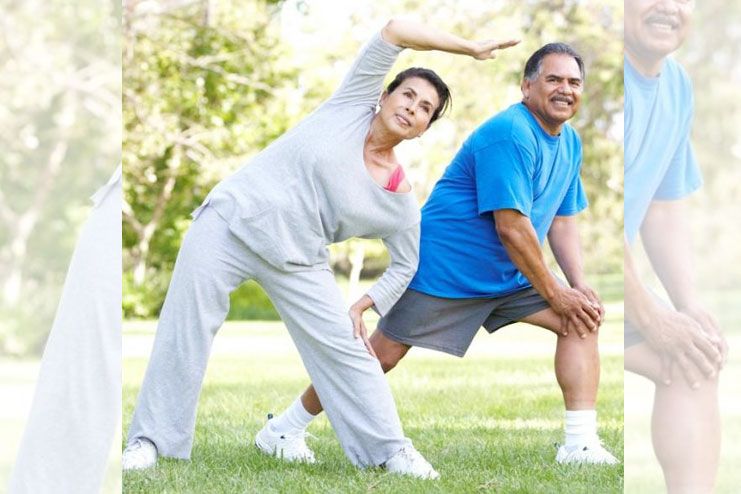
Is Surgery Needed For Rheumatoid Arthritis Patients?
Surgery may become an option if the medications fail. Rheumatoid arthritis surgery may involve procedures like tendon repair, synovectomy, joint fusion, joint replacement, etc. Synovectomy helps remove the inflamed synovium from the elbows, knees, wrists, fingers and hips. Tendon repair help repair the tendons around the joint. Joint fusion can help stabilize or realign a joint and relieve pain. Total joint replacement removes the damaged joint parts besides inserting a prosthesis made of plastic or metal.
15 Home Remedies For Rheumatoid Arthritis:
- Apple Cider Vinegar and Baking Soda
- Aloe Vera
- Banana
- Cinnamon and Honey
- Coconut Oil
- Cloves
- Ginger
- Garlic
- Green Tea
- Fish Oil
- Turmeric
- Epsom Salt
- Acupuncture
- Massage
- Essential Oil
1. Apple Cider Vinegar And Baking Soda For Rheumatoid Arthritis:
Apple cider vinegar (ACV) is a potent natural antibiotic, pathogen killer and gut healer. At the same time, baking soda can help elevate pH level and alkalize the body, which is needed to deal with arthritis. The baking soda causes no side effects and is considered as a natural remedy for rheumatoid arthritis.
How To Use:
-
-
- Mix 2 tbsp ACV with 1/4 tsp baking soda in a glass of filtered water.
- Add 1 ts unsulphured blackstrap molasses or Manuka honey for taste.
- Drink this concoction 2 times a day, 20 minutes before a meal.
- Gradually increase the consumption to 3 times a day.
-
2. Aloe Vera For Rheumatoid Arthritis:
Aloe vera acts as a great natural remedy for many health ailments. However, test Aloe vera as a small patch to check for allergic reactions. If you observe any skin irritation, stop applying it on the skin. Aloe vera can be apart of your anti-inflammatory remedy to get relief from RA symptoms.
How To Use:
-
-
- Cut aloe vera leaves using sharp scissors.
- Peel away the outer leaf and extract the gel inside using fingers.
- And apply it over the affected joints.
- You may also purchase organic gel without preservatives and additives and use.
-
3. Banana For Rheumatoid Arthritis:
Banana is a healthy choice for good health. A healthy dose of Vitamin C, folate, and Vitamin B6 in banana can serve to lessen arthritis. Vitamin C helps in the production of collagen and building joints. Vitamin B-6 and folate act as anti-inflammatory agents.
How To Use:
- Include fresh ripe bananas in your regular diet.
- However, check with your doctor if you should not have it due to other health issues.
4. Cinnamon And Honey For Rheumatoid Arthritis:
Honey and cinnamon are common kitchen ingredients which work well as natural remedies for several health ailments. Cinnamon and honey are a great combination for rheumatoid arthritis as well.
How To Use:
-
-
- Mix both honey and cinnamon together in the form of a powder or paste.
- Add the mixture to a warm cup of water and drink on regular basis.
-
5. Coconut Oil For Rheumatoid Arthritis:
The natural antibiotic, coconut oil and its antioxidants help body strengthen. Regular coconut oil massage can improve the joint health of arthritis sufferers.
How To Use:
-
-
- Massage warm coconut oil into the joint areas particularly after shower or bath when the joints are most pliable.
- Repeat regularly as you can see the ease on the joints.
-
6. Cloves For Rheumatoid Arthritis:
Cloves are ancient spices used for ease of rheumatoid arthritis pain. According to a study, it eased arthritis in mice. It can help reduce inflammation and stop new inflammatory cytokines from popping up in your joints.
How To Use:
-
-
- Include it in curries while cooking or eat raw.
- Apply clove oil, an essential oil of clove that contains eugenol, to get the maximum anti-inflammatory effect.
-
7. Ginger For Rheumatoid Arthritis:
Dried or fresh root of the ginger plant gives ginger that is full of health benefits including anti-inflammatory properties. Thus, ginger greatly helps relieve pain and improve joint functioning.
How To Use:
-
-
- Ginger decreases joint pain and inflammation in people with osteoarthritis (OA) and rheumatoid arthritis.
- Simply add it as ingredients while cooking or eat raw.
-
8. Garlic For Rheumatoid Arthritis:
Yet another tasty addition to curries is garlic, which is full of anti-inflammatory properties. The diallyl disulfide present in the garlic help fight pain (1), inflammation and cartilage damage of arthritis.
[Also More Health Benefits of Garlic]
How To Use:
- Simply add it as an ingredient while cooking or eat raw.
9. Green Tea For Rheumatoid Arthritis:
The polyphenols help tea boost the immune system and fight inflammation. Especially, green tea is a good source of epigallocatechin 3-gallate (EGCG) with the potent antioxidant effects.
10. Fish Oil For Rheumatoid Arthritis:
Fish oil supplements are proven to reduce rheumatoid arthritis pain and stiffness. However, it comes with side effects like nausea, belching and a fishy tasting mouth, besides interfering with medications. So check with your doctor.
11. Turmeric For Rheumatoid Arthritis:
Turmeric is a traditional cooking ingredient with healing properties. The curcumin present in turmeric protect joints from inflammation.
How To Use:
-
-
- Turmeric essential oil can be taken orally.
- Simply add it as ingredient while cooking to reduce the levels of cytokines, or inflammatory messengers in the immune system.
- Alternatively, make turmeric teas or cooking with Asian style dishes.
-
12. Epsom Salt For Rheumatoid Arthritis:
Epsom Salt is one of the best home remedies for pain and is used with warm water as a soaking solution for stiffness and pain. Magnesium in Epsom salt may reduce inflammation.
How To Use:
-
-
- Add Epsom salt to warm bath tub.
- Soak yourself for 20 minutes in the Epsom salt bath and wash off thoroughly with normal water.
-
13. Acupuncture For Rheumatoid Arthritis:
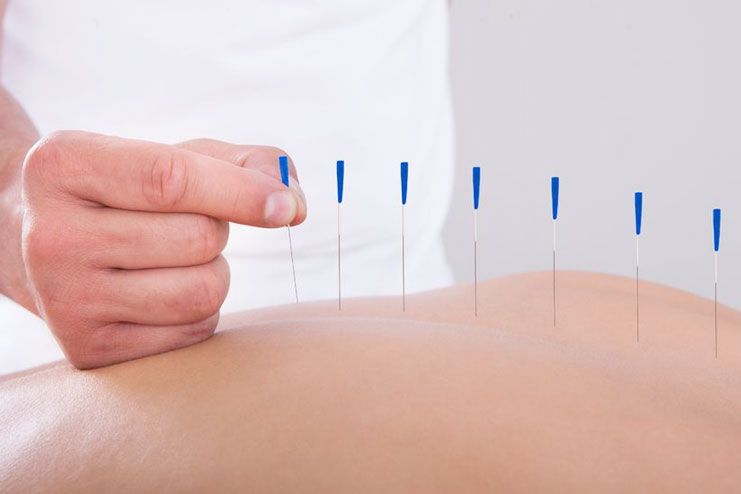
Acupuncture works best for rheumatoid arthritis (RA). Such anecdotal evidence suggests this therapy might be effective in relieving RA discomfort.
How It Works:
-
-
- More than 2,000 acupuncture points connect to the meridians.
- The needles stimulate those to correct the flow of qi and alleviate pain.
-
14. Massage For Rheumatoid Arthritis:
According to research published in May 2013 in Complementary Therapy in Clinical Practice, massages offer relief from pain and stiffness of rheumatoid arthritis, supplemented with daily self-massage at home.
Massages that are good to opt include Thai Massage, Lomi Lomi, Reflexology, Rolfing, Self-Massage, Shiatsu, and trigger point massage.
15. Essential Oils For Rheumatoid Arthritis:
As essential oils are extracted from the stems, leaves, flowers, fruits, and branches of a variety of different plants, they come with nutrients and minerals, which help soothe arthritis pain and inflammation.
Most essential oils possess antioxidant, analgesic and anti-inflammatory properties. Some of the essential oils that have been studied and used in treating the symptoms of rheumatoid arthritis include peppermint oil, orange, ginger, frankincense, myrrh, and turmeric.
How To Use:
-
-
- Use these essential oils as ingredients in cooking recipes.
- Alternatively, use them in flavored water or tea beverages to drink regularly.
-
Prevention Of Rheumatoid Arthritis:
One may not prevent rheumatoid arthritis completely, but simple self-care measures can help manage its signs and symptoms:
-
- Muscles can be strengthened and fatigue can be improved with gentle exercise. Check with your doctor and select suitable exercises.
-
- Heat or cold compress help ease pain and relax tense, painful muscles. Cold compress decreases muscle spasms and dull the pain sensation.
- Find best ways to relax to cope with the stress in your life.
Rheumatoid arthritis is a chronic progressive disease that can impact the person’s family and work life. This medical condition can cause low self-esteem and helplessness to the patient. However, improved lifestyle and simple measures can help cope with the disease.
Discuss more strategies with your healthcare provider and learn what works best for you. For more health information and improved living, keep reading HealthSpectra post. We keep you informed and help lead a healthy life.
FAQs:
1. How Does Rheumatoid Arthritis Start?
Rheumatoid arthritis starts with gradual development of the symptoms for over weeks to months. Initially, joint stiffness is observed, which gradually starts showing pain and tenderness in the joints, upon movement.
2. What Is The Difference Between Arthritis And Rheumatoid Arthritis?
While arthritis is an umbrella term for describing the joint inflammation, rheumatoid arthritis is one type of arthritis. Different kinds of arthritis include rheumatoid arthritis (RA) and osteoarthritis (OA).
3. What Is The Difference Between Rheumatoid Arthritis And Osteoarthritis?
While osteoarthritis is the wear-and-tear damage of joints, rheumatoid arthritis is the damage of the joint lining. Even though both affects the joints, they are a different forms of the condition.
4. Which Foods To Avoid When Suffering With Rheumatoid Arthritis?
Avoid inflammatory foods when suffering from rheumatoid arthritis. Some of the foods to eliminate when with RA include red meat, processed foods, refined carbohydrates and sugar, fried foods, excess salt, soda, gluten, tobacco, alcohol, unhealthy fat, dairy, coffee, etc.
5. What Is The Best Exercise For Rheumatoid Arthritis?
Walking is the most simple and convenient form of exercise that helps improve heart rate, reduce pain and loosen your joints. Other simple exercises include stretching the hips, arms, calves, thighs, and back. And simple finger curling, thumb stretching, and wrist bending.
6. Does Rheumatoid Arthritis Go On Its Own?
Rheumatoid Arthritis is a lifelong disease that needs medical attention. It may lead to further complications like osteoporosis, Rheumatoid nodules, dry eyes, dry mouth, infections, abnormal body composition, heart problems, abnormal BMI, lymphoma and lung diseases.
7. How Long Can A Person Live With Rheumatoid Arthritis?
The life expectancy depends on the nature and the severity of the disease. In general, it is expected that the life expectancy is shortened by roughly 10 to 15 years.
8. What Are The Best Supplements For RA?
With doctor’s approval, rheumatoid arthritis patients may take supplements such as calcium and vitamin D to prevent osteoporosis. Folic acid is a supplement that can prevent the side effects of methotrexate treatment of RA.
In this Article















